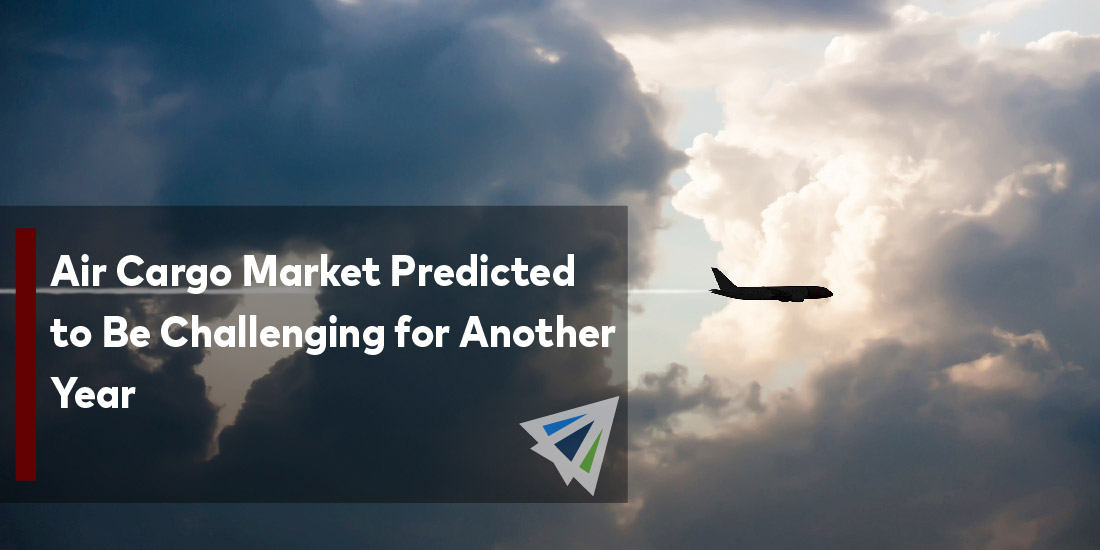As persistent geopolitical tensions continue to weigh heavily on global supply lines, the future of air freight appears to be fraught with difficulties. But even in this turbulent environment, there’s a ray of brightness coming from the world of cross-border e-commerce, which Glyn Hughes, the director general of the International Air Cargo Association (TIACA), noted as a reliable development engine.
Hughes highlights the tangible effects on supply chains of the two-year-old Russia-Ukraine crisis, which are especially noticeable along the EU-Asia air freight routes where increased prices, tight deadlines, and logistical challenges are significant factors. Nevertheless, even in the face of these difficulties, other markets, such as China, have shown tenacity. The country’s GDP grew by more than 5 percent last year, indicating a discernible, if slow, economic rebound.
With a diverse manufacturing base and a growing international commerce scene, India stands out as another promising country. Its GDP is predicted to have surpassed 7 percent last year, and it is expected to continue growing in the years to come. The air freight environment is depicted by these regional dynamics as complicated, with ever-changing waves of opportunity and uncertainty.
Demand For Freight Solutions Increases Amongst Growing E-Commerce Activity
The unstoppable rise of e-commerce, a global industry that powers a sizable amount of air freight volumes, is one unquestionable constant amid all of this turmoil. With e-commerce sites, like Temu and Tik-Tok Shop, seeing exponential sales spikes and quick expansion, the future of e-commerce seems incredibly bright, which is good news for the air freight industry.
The pandemic-related increase in freighters and the subsequent spike in belly capacity (cargo space aboard passenger carriers) in 2023 have created a scenario of excess capacity in some markets, which has put persistent pressure on yields. But there are signs of hope: due to difficulties in ocean shipping schedules, some shippers choose air cargo over maritime routes, which reduces the difference in air freight costs from ocean to air.
Hughes clarifies the cascading effects of protracted interruptions in ocean shipping, which result in a shortage of available containers and make air freight a more alluring option. This is particularly noticeable in the lead-up to holidays such as the Chinese New Year. Air freight continues to pass over barriers such as drought-induced limitations in the Panama Canal, albeit there has been a slight shift in the type of cargo flown to and from Latin America.
The macroeconomic environment presents a mixed bag of opportunities going forward, with expectations that central banks would take into account lowering interest rates in the second half of the year in an effort to boost consumer demand. High inventory levels, however, imply that substantial restocking might not occur until later in the year. However, several verticals—such as e-commerce, high-tech, pharmaceuticals, ultra-fast fashion outside of China, and perishables—are growing and will support the overall optimistic view for air cargo.
Air Cargo Will Likely Face Various Challenges This Year
Even with the encouraging signs and proactive measures that Hughes and TIACA have described, there are still impending obstacles in the air freight business that might slow its growth. The sector is significantly impacted by the ongoing threat of geopolitical conflicts, which spread uncertainty throughout international supply networks. Air cargo carriers have significant challenges due to ongoing wars, trade disputes, and political standoffs worldwide, which frequently lead to interruptions, higher expenses, and more complicated operations.
In addition, the potential for persistent worldwide health emergencies, natural calamities, and unforeseen circumstances worsens the prognosis for the air freight industry. The air freight business will need to demonstrate its resilience and adaptation in the face of ongoing environmental changes and geopolitical tensions. It takes a combination of operational agility, strategic insight, and cooperative efforts across the whole supply chain to navigate through these crosswinds.
In summary, even if the air freight sector is showing encouraging signs of expansion and resilience, it is wise to recognize the complex obstacles that still need to be overcome. Industry participants may navigate through these uncertainties and come out stronger by remaining watchful, proactive, and adaptable. This will help them forge a route towards continuous development and stability in the always changing world of global commerce and logistics.
Should you have any questions regarding this and how it could impact your shipments, please reach out to our team today.
Additionally, we have our weekly market updates that can provide you with relevant freight news, updates, developments across the industry, and more.
